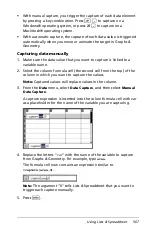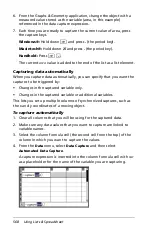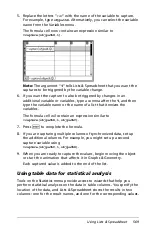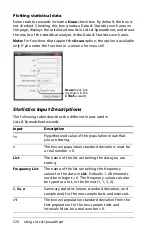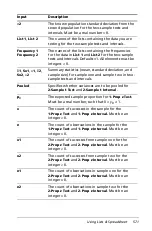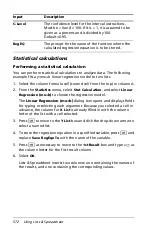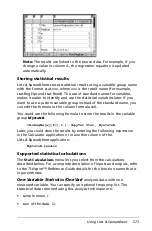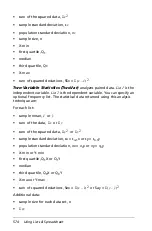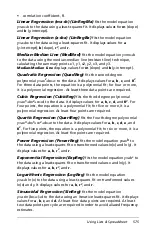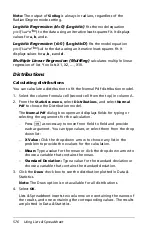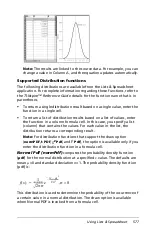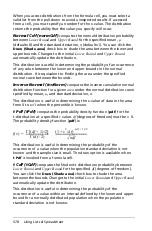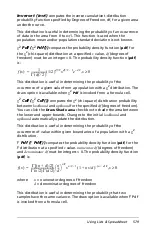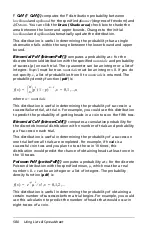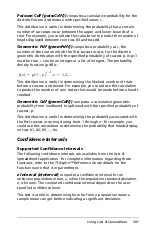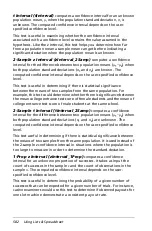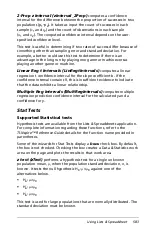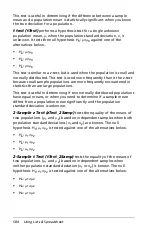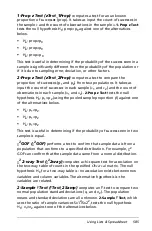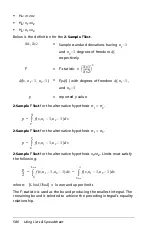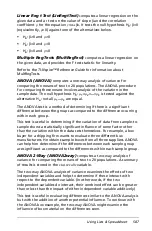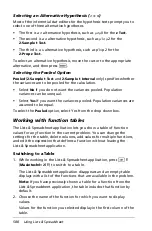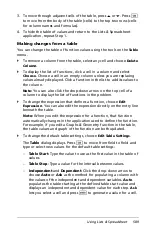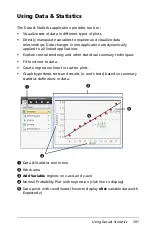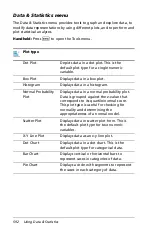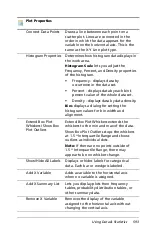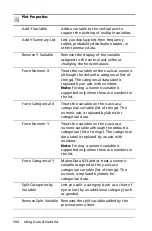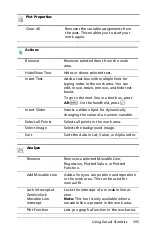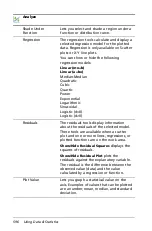
Using Lists & Spreadsheet
581
Poisson Cdf (poissCdf())
computes a cumulative probability for the
discrete Poisson distribution with specified mean,
l
.
This distribution is useful in determining the probability that a certain
number of successes occur between the upper and lower bounds of a
trial. For example, you could use this calculation to predict the number of
heads displayed between coin toss #3 and toss #8.
Geometric Pdf (geomPdf())
computes a probability at
x
, the
number of the trial on which the first success occurs, for the discrete
geometric distribution with the specified probability of success
p
. 0
{
p
{
1
must be true.
x
can be an integer or a list of integers. The probability
density function (pdf) is:
This distribution is useful in determining the likeliest number of trials
before a success is obtained. For example, you could use this calculation
to predict the number of coin tosses that would be made before a heads
resulted.
Geometric Cdf (geomCdf())
computes a cumulative geometric
probability from lowBound to upBound with the specified probability of
success,
p
.
This distribution is useful in determining the probability associated with
the first success occurring during trials 1 through
n
. For example, you
could use this calculation to determine the probability that heads display
on toss #1, #2, #3, ..., #
n
.
Confidence Intervals
Supported Confidence Intervals
The following confidence intervals are available from the Lists &
Spreadsheets application. For complete information regarding these
functions, refer to the
TI-Nspire™ Reference Guide
details for the
function name that is in parentheses.
z Interval (zInterval)
computes a confidence interval for an
unknown population mean,
m
, when the population standard deviation,
s
,
is known. The computed confidence interval depends on the user-
specified confidence level.
This test is useful in determining how far from a population mean a
sample mean can get before indicating a significant deviation.
f x
( )
p
1
p
–
(
)
x
1
–
x
,
1,2,...
=
=
Summary of Contents for TI-Nspire
Page 38: ...26 Setting up the TI Nspire Navigator Teacher Software ...
Page 46: ...34 Getting started with the TI Nspire Navigator Teacher Software ...
Page 84: ...72 Using the Content Workspace ...
Page 180: ...168 Capturing Screens ...
Page 256: ...244 Embedding documents in web pages ...
Page 336: ...324 Polling students ...
Page 374: ...362 Using the Review Workspace ...
Page 436: ...424 Calculator ...
Page 450: ...438 Using Variables ...
Page 602: ...590 Using Lists Spreadsheet ...
Page 676: ...664 Using Notes You can also change the sample size and restart the sampling ...
Page 684: ...672 Libraries ...
Page 714: ...702 Programming ...
Page 828: ...816 Data Collection and Analysis ...
Page 846: ...834 Regulatory Information ...
Page 848: ...836 ...

